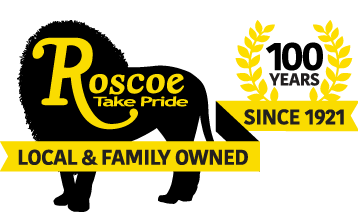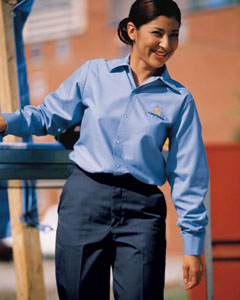If you’re considering a work uniform rental service, you’ll be faced with several options:
- Local independent vs. national supplier
- Customized vs. cookie-cutter program
- Several options that can impact both cost and cost justification
The purpose of this blog is to explain some of the pros and cons of each option and to understand the overall cost justification.
Local vs. Independent
The national suppliers are taking over the market by buying up many smaller independents. They tend to be process efficient and somewhat cheaper (at least initially), just don’t ask for any customization or flexibility and high employee turnover doesn’t help – and many of their customers feel like they get nickled and dimed when they see invoice spikes due to costs hidden in their contract’s fine print.
Local independents are typically more flexible and personable but sometimes cost a bit more because they don’t have the economies of scale.
However, there are some – like Roscoe – that offer all the benefits of working with a local independent and also have the local economies of scale, modern equipment, experienced people (low turnover), and processes honed over many years (95 years in our case) that rival any national from a price and efficiency standpoint.
Work Uniform Rental Program Customization
Most nationals and some local independent work uniform rental companies just need to know the basics: how many employees will wear uniforms, uniform type and where the pick-up/drop-off point(s) is.
We customize every work uniform rental program for each client. Our first step is to conduct an in-depth work uniform assessment that identifies the following:
- Work Uniform Purpose: we want to understand why a work uniform rental program makes sense for you – common reasons include: looking professional, building brand awareness, increasing team spirit, regulatory compliance, etc.
- Work Performed: we need to understand the work each type of employee does so we know if any specialized uniform types are needed to prevent injury and be compliant with safety requirements (e.g. flame resistant for welders, high visibility for employees in the field, etc.)
- Lockers: if you want to use them and how many are needed
- Shared Cost: will the company pay 100% of the uniforms, split the cost with employees or have the employees pay 100%
- Payment Options: rental, leasing and purchase
- Added Value: whether it makes sense to include floor mats, shop towels and wipers, dry and wet mops, and restroom supplies in the initial contract or perhaps add them later
- Point People: the key people on your team that our team will work with
Cost Justification
In addition to determining what degree of shared employer/employee costs there are, we can also identify the cost justification for the overall program:
- Costs of Not Using Work Uniforms: lost business, injuries, lawsuits, etc.
- Costs of Managing Work Uniforms Internally: those using home wash have to incur the capital expense of purchasing the uniforms and warehousing as well as repairing them and internally managing the program (allows you to focus on your core business)
- Shop Towel & Wiper Costs: the Shop Towel Rule makes it illegal to dispose paper towels and rags into a landfill, while reusable shop towels and wipers eliminate the need for inventory and can be much cheaper (cost as little as $0.02 apiece)
- Restroom Supply Purchases: instead of running out of toilet paper and someone running to Costco every week everything you need is delivered on a weekly basis along with your work uniforms so you never run out and you can eliminate health issues and sick days due to poor hygiene
- Reusable Mops: especially when using reusable microfiber dust and wet mops, including mops in your rental program helps to ensure a much higher degree of cleanliness at a lower cost – with less potential for slips and falls (along with floor mats)
Making Your Choice
Work uniform rental contracts are multi-year, so it’s important to look beyond just price to consider the right overall fit for your company.

